Share
Working at ESO
Are you interested in working in areas of frontline technology and in a stimulating international environment? Do you feel your profile matches our requirements? Learn more about our current vacancies and apply online. Read more..
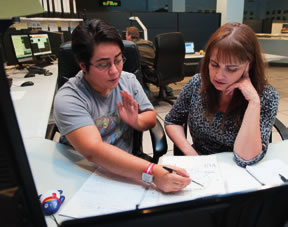
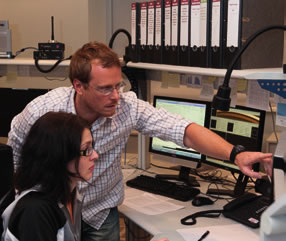
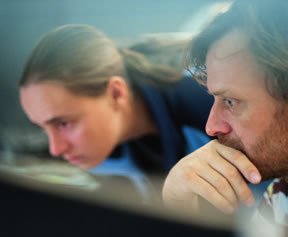
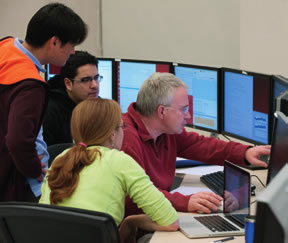
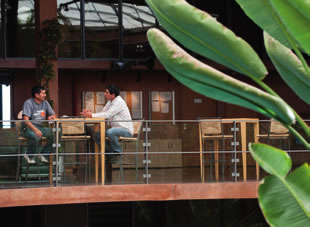
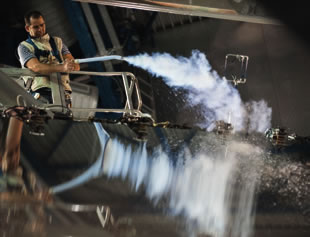
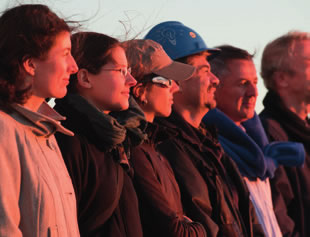
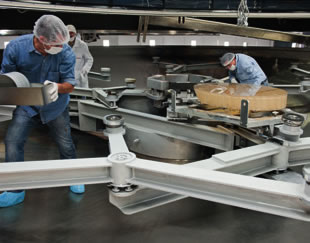
The European Organisation for Astronomical Research in the Southern Hemisphere (ESO) is the foremost intergovernmental astronomy organisation in Europe and the world's most productive ground-based astronomical observatory. ESO carries out an ambitious programme focused on the design, construction and operation of powerful ground-based observing facilities enabling astronomers to make important scientific discoveries. ESO operates three unique world-class observing sites in northern Chile: La Silla, Paranal and Chajnantor (home to ALMA and APEX), and the ESO Headquarters are located in Garching, near Munich, Germany. At Paranal, ESO operates the Very Large Telescope, the world's most advanced visible-light astronomical observatory. ESO is a major partner in ALMA, the largest astronomical project in existence. And on Cerro Armazones, ESO is building the 39-metre Extremely Large Telescope, which will become "the world's biggest eye on the sky" and whose operations will be fully integrated into the Paranal Observatory.
For its Science Operations (PSO) and Maintenance-Support-Engineering (MSE) departments at the Paranal Observatory, ESO is inviting students from Chilean universities to participate in our program:
Summer Students Chile 2020
Paranal
Deadline 30/09/2019
The Paranal Science Operations Department (PSO) is responsible for the execution of all scheduled observations and the production of astronomical data of highest quality. PSO is charged to maintain and whenever possible improve the scientific and operational performances of the Paranal telescopes and instruments. Science operations support is provided to the four VLT 8-m telescopes, to the VLT Interferometer with its auxiliary telescopes, the VLT survey telescopes, and to all instruments available for scientific observations. PSO has a total workforce of 40 astronomers and 25 engineers.
The Maintenance, Support and Engineering (MSE) Department of the Paranal Observatory ensures technical availability of the four VLT 8m telescopes, the two survey telescopes (VST and VISTA), the VLT interferometer with its auxiliary telescopes, many complex instruments for scientific observations and common facilities (power production, chillers and three coating units). The MSE Department of Paranal has a total workforce of about 60 engineers and 25 technicians, distributed in six groups (Systems and Optics, Electronics, Mechanics, Software, Instrumentation, and Support and Quality Assurance).
For the period January-February 2020 we have identified the following projects that may be of interest for Chilean students.
I. VLT Interferometer: Bright Calibrators for MATISSE
MATISSE (Multi-AperTure mid-Infrared SpectroScopic Experiment) is a second generation VLTI (Very Large Telescope) instrument which entered operations in April 2019. The instrument's observing window is the thermal infrared from 3 up to 13 microns. The 3 - 5 microns region is a new territory for interferometers with 4 telescopes beam combiner.
The MATISSE consortium has a calibrator program covering faint calibrator stars, which are needed to accurately measure sizes of faint astronomical objects. However, especially in the first period of the instrument many of the observing programs request bright sources. The calibration strategy of MATISSE currently does not include bright calibrators as they are resolved, and their diameter is not measured. Moreover, it is not known if calibrating bright sources with much fainter ones could introduce a bias in the final scientific result.
We have created a list of calibrators for the observatory to be used to test the instrument. The current project aims at extending this list, analyzing the data already acquired and new data that will be taken in the next months, with the purpose to strengthen the calibration scheme of MATISSE.
Objectives
- Strengthen the calibration scheme of MATISSE with a focus on bright sources
- Identify suitable calibrator stars from pertinent existing catalogues
- Observe some of those new calibrators during January/February 2020
- Analyse the data taken with the goal to measure the diameters of the observed stars
- Cross-calibrate bright and faint calibrator stars
- Improve the Quality Control tool used in operations to evaluate the MATISSE data quality
Student Profile
- Advanced students in natural sciences, mathematics or software engineering
- Good working knowledge of python and Linux.
- Basic knowledge of interferometry is desirable.
- Students accepted from any career if the main competences are fulfilled.
Recruits: PSO Dpt
II. Enhance telescope performance monitoring capabilities
Monitoring performance of the telescopes and the interferometer (VLTI) is critical to deliver the highest quality scientific data. Paranal has an engineering data platform called DataLab that enables analyzing hundreds of parameters from the various operational systems. The project aims at advancing at deeper level in data analysis and visualization.
Objectives
- Create and update performance monitoring notebooks, routines and dashboards for Paranal telescopes and VLTI systems
- In coordination with software group work on the integration of new data sources into DataLab
- Translate existing Matlab routines into Python
- Prepare tutorials and documentation for the created notebooks and dashboard
- Provide training on how to create notebooks and dashboards
Student Profile
- Either SW / computer engineering or physics student with a strong background in Python, Jupyter notebooks, Grafana, Matlab, databases and time series data analysis. Needs be proficient in English. Students accepted from any career if the main competences are fulfilled.
- Students accepted from any career if the main competences are fulfilled.
Recruits: MSE Dpt
III. VLT Interferometer: Monitoring of the transfer function
At the VLTI, the stability of the transfer function (TF) is the traditional criterion that is used to give quality grades to service mode observations. However, this quantity is estimated only over the time of a given observation (typically one hour) .
The goal of this project is to produce a comprehensive analysis tool for the stability of the TF over an extended period of time (one or several nights). This will allow to perform a range of diagnostics that are highly desirable for the improvement of operations and data quality at VLTI.
Many of the fundamental bricks required for such a tool already exist in a distributed manner in our quality control modules. Depending on the student's experience in python, a simple command-line script or an interactive interface collecting and displaying the relevant quantities (from image meta-info or a database) could be considered.
Objectives
- Understand the operational needs and derive from them the specifications to design the tool for long-term monitoring of TF stability.
- Develop the code
- Test it on archive data
- Integrate it into the operational environment
Student Profile
- Advanced students in natural sciences, mathematics or software engineering
- Experience with python coding is mandatory.
- Experience with handling of fits files is desirable.
- Basic knowledge of interferometry is desirable.
- Students accepted from any career if the main competences are fulfilled.
Recruits: PSO Dpt
IV. Repairing, validating and characterizing detector controller spare parts
The FIERA detector readout systems is still in use in Paranal in many instruments. In case of hardware failure in any of these systems, we must be able to replace the faulty component in the minimum time possible and guarantee the system performance.
Most of the spare parts available have not been tested thoroughly in a real detector system. To overcome this, a FIERA detector test bench with a E2V CCD has been installed in the detector lab. This system allows to test most of the boards with a scientific grade CCD in a real environment and detect deviations from the proper performance.
Objectives
- Upgrade FIERA video boards with new OPAM
- Complete characterization of the upgraded video boards
- Validate the working condition of all FIERA spare parts (Commboards, Bias Boards, Clock Boards, Clock SIMMS boards, Video boards)
- Validation and characterization of spare parts for 2 complete set of Power Supplies
- Prepare detailed report for each tested board.
- Prepare a final report of the work performed
Student Profile
- Students of last 2 years in Electronics or Electrical Civil Engineering. Students accepted from any career if the main competences are fulfilled.
- Good working knowledge of Python and Linux
- Experience with handling delicate electronic boards
- Some experience in soldering/desoldering SMD components.
- Students accepted from any career if the main competences are fulfilled.
Recruits: MSE Dpt
V. Towards a statistical model of MUSE-AO performance
MUSE is one of the most sophisticated instruments on board 8m class telescopes around the world, capable to delivering very high-quality 3D images, comparable to the resolution of the HST with a full spectrum in each pixel. This is done in combination with GALACSI, the Adaptive Optics module at UT4. For the operations, it is essential to understand the performance of the AO system (quantified as the so-called Point Spread Function PSF) as a function of atmospheric parameters such as the seeing, ground layer turbulence, and distance to the horizon. For the past few months, as a part of a Science-operations project dedicated to investigating the AO performance of MUSE, we have gathered data under varying atmospheric conditions.
In this context, the aim of the student project is to develop a model to accurately predict the PSF given certain weather conditions. With the proposed project, the student will make use of the data products from the already reduced MUSE data to arrive at a mathematical model which outputs a probable PSF value given weather conditions using statistical techniques.
Objectives
- Develop a multivariate statistical model of environmental factors that affect performance quantified by the PSF
Student Profile
- Advanced mathematics or natural science students
- Advanced knowledge of python programming language
- Basic knowledge of astronomical observations and methods is desirable.
- Students accepted from any career if the main competences are fulfilled.
Recruits: PSO Dpt
VI. Software logs dashboard and metrics for performance
One of the long term goals of MSE is to Maintain the Condition Operational (MCO) for all systems. One of the goals is to use data tools to improve the troubleshooting and to develop performance metrics of its instrument / telescope. Paranal DATALAB contains operational data from many years and provides advanced visualization and deep analysis tools. While the use of opslogs to graph specific measurements is widely adopted in MSE, the analysis of software logs and developing metrics combining more sources has been fully accomplished only by a few engineers. This project aims at taking one extra step and develop advanced troubleshooting dashboards and some performance metrics based on software logs.
Objectives
- Select three instruments / areas to analyze.
- Together with the MCO / SW Responsible, collect troubleshooting practices and preferred performance metrics that can be extracted automatically from software logs available at Datalab.
- Implement one special metric computation, i.e., those that go beyond above simple averaging or simple stat descriptors. For example, the profile of errors by types using text clustering.
- Implement a Jupyter Notebook that displays the dashboard using native tools. This notebook should be ready to be executed periodically, like some reports currently in production.
- Integrate the selected dashboards in the official DataLab repository.
Student Profile
- Electrical/Electronics, Software Engineer
- Python, Jupyter Notebooks, Statistics.
- Students accepted from any career if the main competences are fulfilled.
Recruits: MSE Dpt
VII. Python scripts for quality control: KMOS
KMOS is one of the instruments on UT1-Antu. We have an ongoing project to merge nighttime operations of UT1 and UT2 to a single unit. In this context it is necessarily to streamline and automatise the quality control procedures of KMOS observations as much as possible.
The goal of this project is therefore to write a python code that automatises the main quality control of KMOS. The specific objectives for the code to be pursued by the student are the following:
Objectives
- perform image analysis on KMOS acquisition and science frames
- consider other applicable criteria for quality control grading such as nighttime calibrations and sky conditions
- measure the signal-to-noise ratio of the science spectra
- the tool architecture needs to comply with the requirements of the framework SciOpsPy software environment
Student Profile
- Advanced knowledge of python programming language
- Students of natural science, mathematics or software engineering
- Basic knowledge of astronomical observations and methods is desirable.
- Students accepted from any career if the main competences are fulfilled.
Recruits: PSO Dpt
VIII. Scanned documentation archiving in the Paranal repository
The Product Data Management is ESO's internal official document repository. After it was setup and fed with many digital documents, a large amount of old paper documents were scanned and added into a temporary workspace. We need to re-distribute those documents to the PAO PBS, which is the official Product Breakdown Structure under configuration control. It requires a careful mapping and transfer inside the tool, avoiding the loss of documents.
Objectives
- Learn PDM basics including file transfer techniques and get familiar with the product breakdown structure
- Find the scanned documents already inserted in the official PBS, and eliminate duplication
- Map the structure in both workspaces and transfer documents from paper scanned paper archive to PAO PBS
- Consult with system responsible for all documents whose destination in the structure isn't clear
- Move existing documents inside the PBS to match the product structure.
Student Profile
- Information and documentation career
- Interested to learn management of a technical digital repository
- Students accepted from any career if the main competences are fulfilled.
Recruits: MSE Dpt
IX. Python scripts for quality control: migration towards new standards
For unifying our framework for quality-control, we have recently introduced the so-called SciOpsPy software environment. In this context several of existing quality control scripts need to be adapted to this new framework.
The goal of this student project is to support this adaptation of quality control scripts for specific systems.
Objectives
- Refactor the quality control scripts of our planet hunter instrument ESPRESSO, to comply to and interface adequately with the new SciOpsPy framework
- Port to python 3.x the existing quality control scripts for the survey telescopes VST and VISTA. It is expected that the two above objectives are enough for two different studentships
Student Profile
- Advanced knowledge of python programming language
- Students of natural science, mathematics or software engineering
- Basic knowledge of astronomical observations and methods is desirable.
- Students accepted from any career if the main competences are fulfilled.
Recruits: PSO Dpt
X. PLC data collection into a DataLab
The Datalab is an engineering data platform currently recording telemetry and logs from the observatory. At the same time, Datalab delivers a large number of tools to analyze this data with advanced algorithms if needed. The current telemetry can only be stored at low rates and the keywords obtained from the current software are fixed, which limits the inclusion of new signals into the database. Obtaining data directly from the hardware has been highly requested by different teams as a need to get information about the hardware at higher resolution and frequency. The proposal is to work on implementing a solution that can read information from PLCs using OPCUA and sampling from VLTSW and insert this at different rates and resolutions into the databases for further analysis
Objectives
- Investigate and design a scalable solution that can read information available in PLCs using OPCUA and sampling in current VLTSW to store this data into the Datalab databases
- Implement and document the system designed giving a clear idea of the capacity of the solution and its limitations
- By the end of the internship the student should deliver an easy to deploy and configurable system that can gather information from the different brands of PLCs (using OPCUA) and information from current systems at higher rates and push it to the Datalab databases.
Student Profile
- Electrical/Electronics or Software Engineer. Students accepted from any career if the main competences are fulfilled.
- Good working knowledge of Python, Linux, Databases and Docker
- Experience with different types of standard communication protocols such as OPCUA, Mqtt.
- Students accepted from any career if the main competences are fulfilled.
Recruits: MSE Dpt
XI. Porting and releasing ESO's filter database to the community
For users of ESO facilities, it is useful to know as accurately as possible the transmission curves of the various filters used in our optical devices. In this context the goal of this project is to clean and update our existing filter database (which is at the moment a large text file) and port it to an interface that is more easily accessible by users than currently.
Objectives
- Familiarize him/herself with the existing web interface (filters.ls.eso.org) and DB content (in interaction with knowledgable ESO staff)
- write a search algorithm which allows to select a desired filter as a function of
- a) Filter number
- b) Central wavelength and bandwidth
- c) ESO filter list The existing algorithm can be used as a guideline, if possible
- Write a web interface which communicates with the search algorithm to display the characteristics of the requested filter(s) and allows download on the requester's computer of the desired transmission curve(s).
- Write the documentation on the working of the algorithm, so it can be maintained/upgraded once the studentship is finished.
Student Profile
- Students of natural science, mathematics or software engineering
- Experience in mySQL and/or Java is desirable.
- An astronomy student with some software skills is welcome too.
- Students accepted from any career if the main competences are fulfilled.
Recruits: PSO Dpt
XII. Proof-of-concept of real time monitoring of thermal behavior of telescope components
Thermal imaging is a well-known method for predictive maintenance, allowing to identify sources of excessive heat in operational components. The project aims at developing a low-cost and wireless thermal camera Raspberry Pi system that can be deployed easily in the field in strategic places for real-time monitoring.
Objectives
- Assemble the camera system and program its operational for different environmental conditions
- Study the impact of the device for light contamination at night
- Transmit the data wireless to the engineering archive
- Process the images to do real-time analysis and detect thermal anomalies
Student Profile
- Electrical/Electronics engineer. Students accepted from any career if the main competences are fulfilled.
- Good working knowledge of Python, and databases.
- Experience with imaging devices and image analysis is desirable.
- Students accepted from any career if the main competences are fulfilled.
Recruits: MSE Dpt
XIII. Telescope Performance Monitoring tool kit
Monitoring key performance indicators of our telescopes is a crucial requisite for maintaining the VLT at the highest possible operating standards. This is currently done in a relatively distributed manner across different tools and platforms. The goal of this project is to (help us to) implement an integrated monitoring tool that enables easily accessible and comprehensive information about the performance status of our telescopes. For this we focus on metrics that are mostly relevant for science operations, including: pointing model quality, zero-order mirror shape calibration ('OneCal'), speed and quality of image analysis convergence, acquisition completion time, focus change time.
Objectives
- Create a dedicated data analysis interface for monitoring and displaying the specific metrics most relevant for Science Operations (see above), both graphically and numerically
- Basis of this should be our internal data lake facility 'DataLab'
- Provide a written standardized summary output, that can be used as input for our quarterly reporting
The second objective is optional depending on the progress of the project
Student Profile
- Electronics or software engineer
- Knowledge of python is mandatory.
- Students accepted from any career if the main competences are fulfilled.
Recruits: PSO Dpt
XIV. Triangulating the seeing measurements from various sites around Paranal
Measurements of the seeing (a measure of the atmospheric turbulence that 'smears' any astronomical image) are available for different sites in a region of 40x40km around the VLT and ELT observatories. Cerro Paranal, Armazones, Ventaronnes and McKenna (Fig. 1) have all been studied during site testing campaigns, either by ESO or TMT and several months or years of simultaneous data are available for some of them.
The analysis of a few indivdividual nights show that the seeing can be highly correlated between those sites, with a lag between several minutes up to 2 hours (as derived from the cross-correlation between 2 sites).
There is the clear need for a more systematic analysis that allows us to conclude on the benefits of seeing triangulation (i.e. between >2 sites) for local real-time forecasts of the turbulence. In this context, the objectives of this project are the following
Objectives
- Gather all available data from the four sites Paranal (VLT), Armazones (future ELT), Ventarrones, Mackenna
- Detect correlations between the seeing measurements
- Perform triangulation to analyse the wind speed and direction of the turbulent layers detected in those series
- Confirm those layers with ECMWF data of the wind speed and velocity
- Conclude on the potential of a grid of seeing measurement profilers measuring simultaneously the turbulence over those 4 sites, to predict in real-time ('nowcast') the seeing at Paranal & Armazones Not all 5 items might be doable in a 2-month internship, but at least the first 3 are already a very good start to know the potential of nowcasting the turbulence.
Student Profile
- Advanced student in natural sciences or related field.
- Interest in atmospheric physics.
- Knowledge of python and interest in data analysis.
- Students accepted from any career if the main competences are fulfilled.
Recruits: PSO Dpt
We Offer: ESO offers a special allowance during the period you are performing your internship with us; transportation arrangements (plane tickets) from and to Santiago are provided by ESO, with accommodation provided on site. The Duty Station is Paranal Observatory, in the II Region, 120km South of Antofagasta. Work in the Vitacura offices is also possible and foreseen in some cases, depending on the nature of the project.
The period of the internship is January-February 2020.
Application: We invite all students from Chilean Universities in an advanced stage of their career to apply. The apprenticeship should be supported by the University and therefore covered by the accident insurance (Law 16.744).
If you are interested in working in areas of frontline technology and in a stimulating international environment, you are invited to apply online at http://recruitment.eso.org/. Applications must be completed in English and should include a motivational letter indicating the project(s) you are interested to apply to, and CV.
Closing date for applications is 30 September 2019.
The post is equally open to suitably qualified candidates irrespective of gender, age, disability, sexual orientation, race or religion.
References for MSE Dpt: http://www.eso.org/sci/facilities/paranal/paranalenginternship.html
